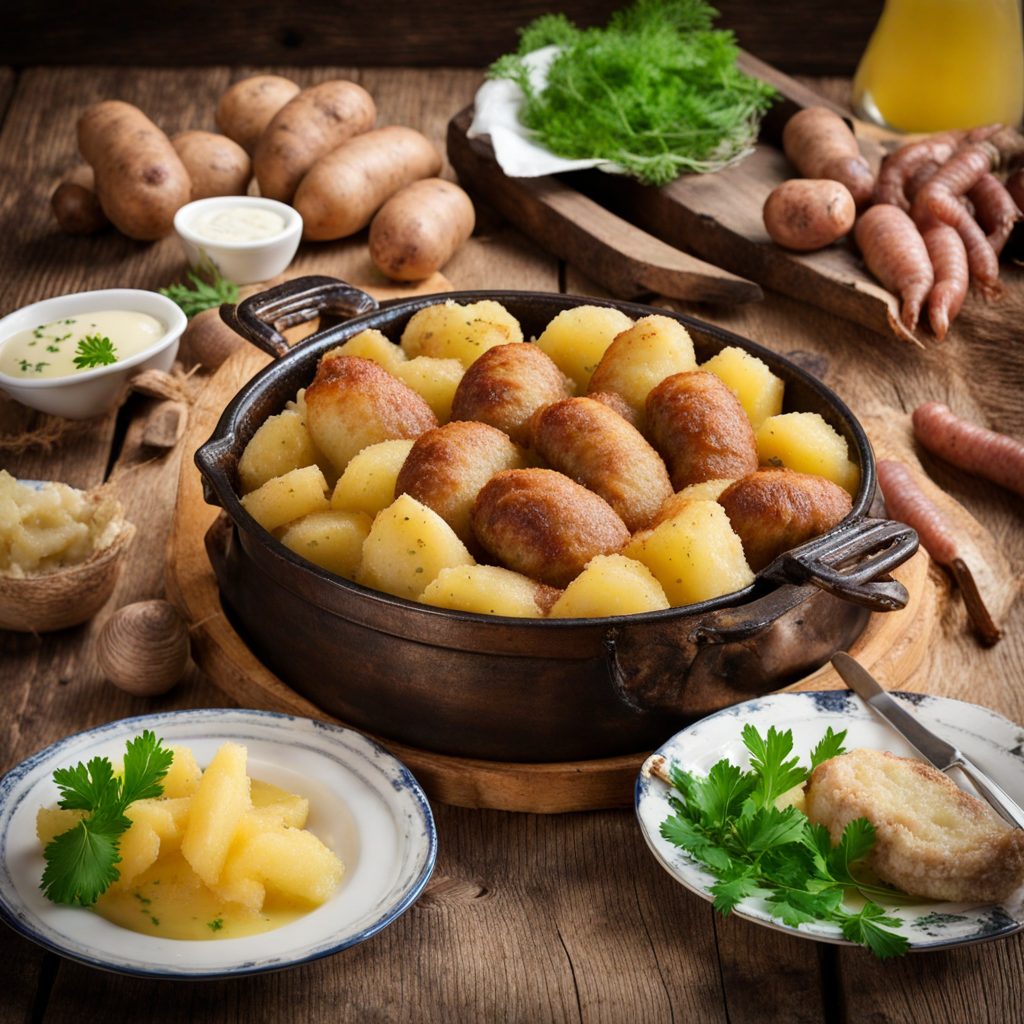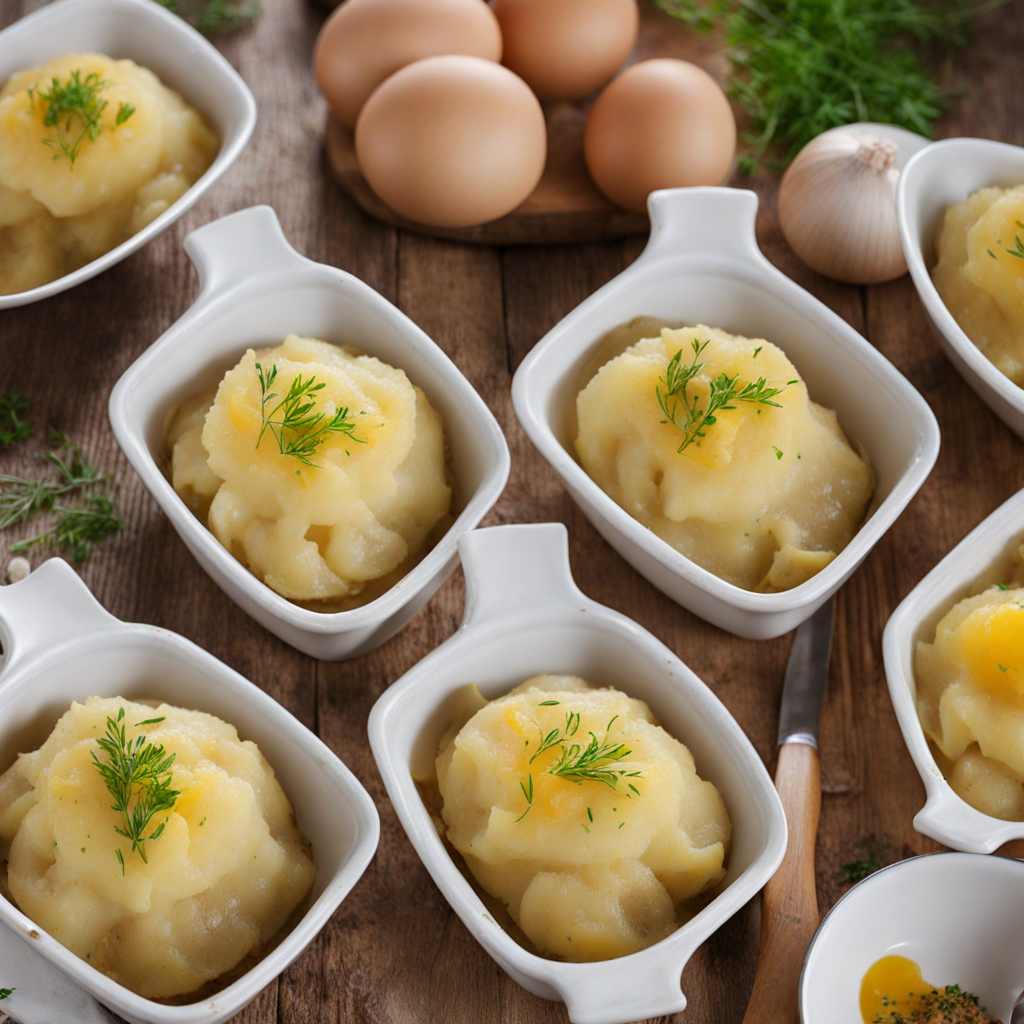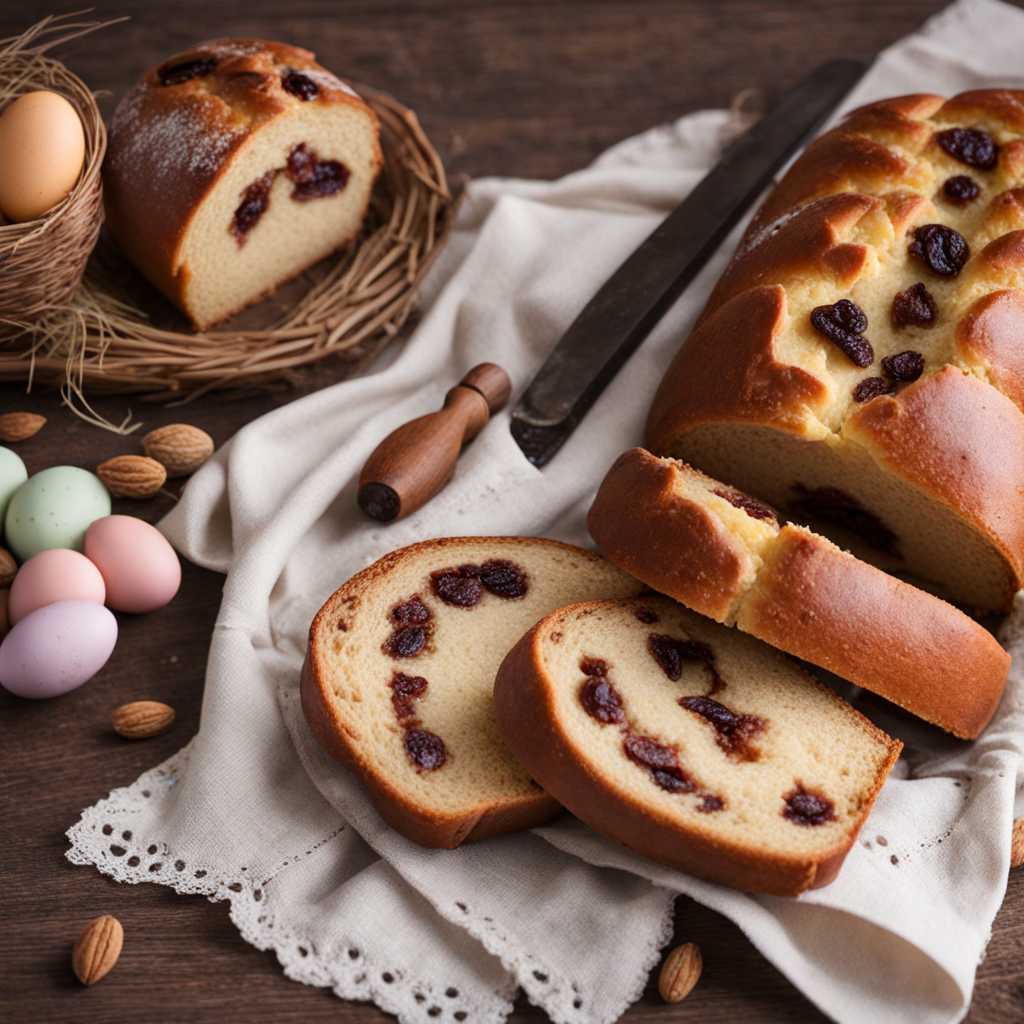Vėdarai
Vėdarai, a traditional dish from Lithuania, is a hearty and rustic preparation that reflects the country’s agricultural heritage. Often referred to as "potato sausage," Vėdarai is made primarily from potatoes and is typically filled with a mixture of meat, often pork, along with various seasonings. This dish is a staple in Lithuanian cuisine and showcases the resourcefulness of the local people, who have historically relied on the ingredients readily available in their environment. The history of Vėdarai can be traced back to the rural communities of Lithuania, where food preservation and utilization of every part of an animal were essential for survival, especially during the long winters. The dish embodies the essence of peasant cooking, where simplicity and heartiness were paramount. Traditionally, it was made during festive occasions and family gatherings, symbolizing warmth and togetherness. Over time, Vėdarai has evolved, finding its place in modern Lithuanian households while still honoring its rustic roots. The flavor profile of Vėdarai is rich and satisfying. The base of the dish is grated or mashed potatoes, which provide a creamy and slightly earthy taste. When prepared properly, the potatoes are seasoned to enhance their natural flavor, often with salt and pepper. The filling, usually made from minced pork, is seasoned with spices such as garlic, onion, and marjoram, contributing a savory depth that contrasts beautifully with the mildness of the potatoes. The dish is often served with sour cream or a side of
How It Became This Dish
Vėdarai: The Heart of Lithuanian Culinary Tradition Vėdarai, a traditional Lithuanian dish, embodies the rustic charm and agricultural heritage of Lithuania. This hearty, savory delicacy consists primarily of potatoes and pork, and is often considered a staple food that showcases the resourcefulness of Lithuanian cooks through the centuries. The origins, cultural significance, and development of Vėdarai reveal a rich tapestry of history, tradition, and community that is deeply woven into the fabric of Lithuanian life. #### Origins: A Peasant Dish with Historical Roots The roots of Vėdarai can be traced back to the agrarian lifestyle that characterized Lithuania, particularly in the rural regions. As a peasant dish, it emerged from the necessity of utilizing available resources. Potatoes, introduced to Europe in the late 16th century from South America, quickly became a staple crop in Lithuania due to their hardiness and adaptability to the local climate. The integration of potatoes into Lithuanian cuisine marked a significant shift in dietary practices, as they provided a versatile and filling food source. Pork, too, has been a significant part of the Lithuanian diet for centuries. The tradition of pig farming is deeply ingrained in Lithuanian culture, where pigs were often raised by families not only for meat but also as a source of economic stability. In rural households, it was common to utilize every part of the pig, leading to the creation of various dishes, among which Vėdarai stands out. The earliest mentions of Vėdarai can be found in Lithuanian folk literature and cookbooks from the 19th century, reflecting the dish's popularity among the rural populace. The traditional preparation involved stuffing pig intestines with a mixture of grated potatoes, diced pork, and various seasonings, then cooking them until golden and crispy. This method of preparation was practical, as it allowed for long-term storage and could be made in large quantities to feed families during the long winter months. #### Cultural Significance: A Symbol of Community and Togetherness Vėdarai is more than just a dish; it is a symbol of Lithuanian identity and a representation of the communal spirit that defines many cultural practices in the country. In rural communities, the act of making Vėdarai often brought families and neighbors together. Traditionally, the preparation of this dish was a communal affair, where family members would gather to grate potatoes, mix ingredients, and stuff the intestines. This process fostered a sense of togetherness and shared labor, reinforcing social bonds within the community. The dish also holds cultural significance during certain festivities and gatherings. While it may not be served at every meal, Vėdarai is often prepared for special occasions, such as family reunions, harvest festivals, and even weddings. Its hearty nature makes it a favorite during cold months, providing warmth and sustenance for those who partake in these celebrations. The sharing of Vėdarai during communal meals reflects the values of hospitality and generosity that are deeply rooted in Lithuanian culture. In addition, Vėdarai has found its place in contemporary food culture, where it is celebrated not only as a traditional dish but also as a culinary emblem of Lithuania. Food festivals and events often feature Vėdarai, showcasing its importance in the national culinary landscape. As Lithuanians around the world seek to connect with their heritage, Vėdarai serves as a delicious reminder of their roots. #### Development Over Time: A Culinary Evolution As Lithuania navigated through the tumultuous waves of history, including periods of occupation and independence, the preparation and perception of Vėdarai evolved alongside the nation itself. In the early 20th century, the dish began to gain recognition beyond rural households, as urbanization brought changes to culinary practices. With the migration of people from rural areas to cities, the ways in which Vėdarai was prepared and served also transformed. While the traditional version remains popular, modern interpretations have emerged, adapting the dish to contemporary tastes and dietary preferences. Chefs and home cooks alike have experimented with ingredients, substituting pork with other meats, such as chicken or turkey, and incorporating various herbs and spices that reflect global culinary trends. Vegetarian and vegan versions of Vėdarai have also made an appearance, utilizing plant-based proteins and alternative stuffing methods, thus broadening its appeal to a more diverse audience. The global Lithuanian diaspora has played a crucial role in the preservation and adaptation of Vėdarai. Lithuanian communities in countries such as the United States, Canada, and the United Kingdom have kept the tradition alive, often adding their unique twists shaped by local ingredients and culinary influences. This cross-cultural exchange has enriched the dish, making it a symbol of resilience and adaptability. The rise of food tourism in Lithuania has also contributed to the reimagining of Vėdarai. As visitors seek authentic culinary experiences, restaurants and chefs have embraced the dish, presenting it with a modern flair while honoring its traditional roots. This renewed interest has sparked conversations about the importance of preserving culinary heritage and the stories behind the dishes that define a culture. #### Conclusion: Vėdarai as a Culinary Heritage Today, Vėdarai stands as a testament to Lithuania’s rich culinary heritage, reflecting the nation’s history, culture, and the resilience of its people. From its humble beginnings as a peasant dish to its recognition as a symbol of national pride, Vėdarai has evolved while remaining true to its roots. It encapsulates the essence of Lithuanian life—where food is not just sustenance but a means of connection, celebration, and identity. As Lithuania continues to embrace its culinary traditions while looking towards the future, Vėdarai will undoubtedly remain a beloved dish that nourishes both body and soul. Whether served at a family gathering, a festive celebration, or a modern restaurant, Vėdarai offers a taste of Lithuania’s past, present, and future, inviting all who partake to share in its rich history and enduring significance.
You may like
Discover local flavors from Lithuania







